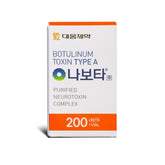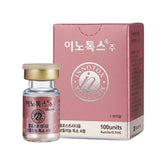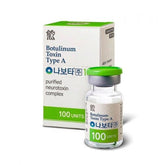The Art of Combining Botulinum Toxins with Dermal Fillers

The Art of Combining Botulinum Toxins with Dermal Fillers. In the realm of aesthetic medicine, the combination of botulinum toxins and dermal fillers stands at the forefront of non-surgical facial rejuvenation. This dual approach allows practitioners to address a comprehensive range of aging concerns, delivering results that are both subtle and impactful. With botulinum toxins increasingly being used in tandem with dermal fillers, understanding how these treatments work together is vital for anyone considering cosmetic enhancements.
The Art of Combining Botulinum Toxins with Dermal Fillers: The Synergistic Effect
Understanding Botulinum Toxins:
Botulinum toxins, the category of neurotoxins that includes brands like Botox and Dysport, are renowned for their ability to smooth dynamic wrinkles, which are formed from repetitive muscle movements. By blocking nerve signals, these toxins relax the muscles, softening expression lines and preventing the formation of new ones.
The Role of Dermal Fillers:
Dermal fillers, on the other hand, are used to restore lost volume, sculpt facial contours, and smooth out static wrinkles, which are not caused by muscle movement but by a loss of collagen and elasticity in the skin.
A Comprehensive Approach:
When used together, botulinum toxins and dermal fillers complement each other, addressing both types of wrinkles while also creating a more lifted and youthful appearance. This comprehensive approach can provide a more natural result than using either treatment alone.
Who Can Benefit?
The combination of botulinum toxins and dermal fillers can benefit a wide range of individuals. Those with early signs of aging can use the treatments preventatively, while more mature patients can restore a youthful appearance that might have been thought lost to time. The key is a tailored approach that considers the individual's unique facial anatomy and aging pattern.
The Art of Combining Botulinum Toxins with Dermal Fillers: Customized Treatment Plans
Assessment and Goals:
A detailed assessment by a qualified practitioner is essential. This includes discussing the patient's aesthetic goals, analyzing their facial structure, and understanding the specific areas that need to be addressed.
Strategic Placement:
Botulinum toxins are typically used on the upper face, where expression lines are most prominent, while dermal fillers are often applied to the mid to lower regions of the face. Strategic placement ensures a balanced and harmonious appearance.
The Treatment Process
Botulinum Toxin Application:
The procedure begins with the administration of botulinum toxins to targeted areas. This treatment is relatively quick, with minimal discomfort and no required downtime.
Dermal Filler Application:
Dermal fillers are injected after the effects of the botulinum toxins are visible, which can take several days. Fillers may provide immediate results, adding volume and smoothing out wrinkles upon injection.
Follow-Up:
Patients will have a follow-up appointment to assess the results and determine if additional adjustments are necessary to achieve the desired outcome.
The Art of Combining Botulinum Toxins with Dermal Fillers: Advantages of Combining Treatments
Enhanced Results:
The combined use of botulinum toxins and dermal fillers often leads to more significant, longer-lasting results. Botulinum toxins can extend the life of dermal fillers by reducing the muscle movements that can break down filler material.
Versatility:
This combination can be used to address multiple concerns in one session, from forehead lines to nasolabial folds and lip augmentation, providing an all-in-one solution for facial rejuvenation.
Tailored Aesthetics:
Patients can enjoy a customized treatment experience that specifically targets their areas of concern, ensuring results that look natural and true to their features.
Safety and Considerations
Choosing the Right Practitioner:
The safety and success of combining botulinum toxins with dermal fillers largely depend on the expertise of the practitioner. It's crucial to choose a board-certified dermatologist or plastic surgeon with experience in administering both treatments.
Understanding the Risks:
While both botulinum toxins and dermal fillers are considered safe, combining them increases the complexity of the procedure. Patients must be aware of the potential risks and side effects, including bruising, swelling, and asymmetry.
The Art of Combining Botulinum Toxins with Dermal Fillers: The Future of Facial Aesthetics
The trend of combining botulinum toxins with dermal fillers is indicative of the future direction of aesthetic treatments, where a personalized and multi-faceted approach is paramount. As research advances and new products enter the market, the possibilities for non-surgical facial rejuvenation continue to expand.
Combining botulinum toxins with dermal fillers represents a paradigm shift in aesthetic medicine, offering a nuanced approach to facial rejuvenation. This synergy allows for the creation of tailored results that honor the natural beauty and individuality of each patient. With the right practitioner and a clear understanding of the treatments, patients can achieve a refreshed, revitalized appearance that is both subtle and transformative.
In the dynamic world of cosmetic enhancements, the artistry behind combining botulinum toxins with dermal fillers stands as a testament to the ever-evolving pursuit of beauty, merging science and aesthetic vision to defy the temporal bounds of aging gracefully.





